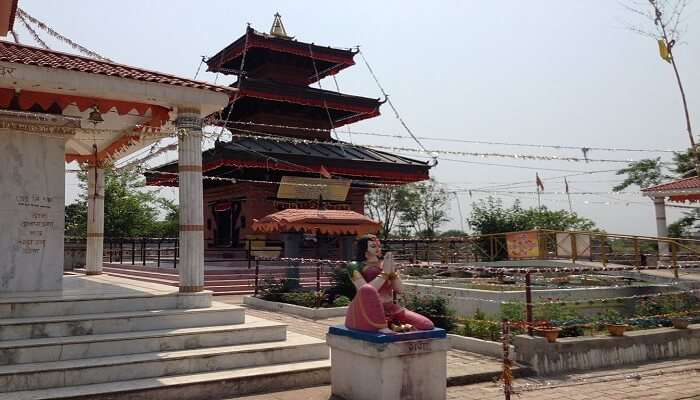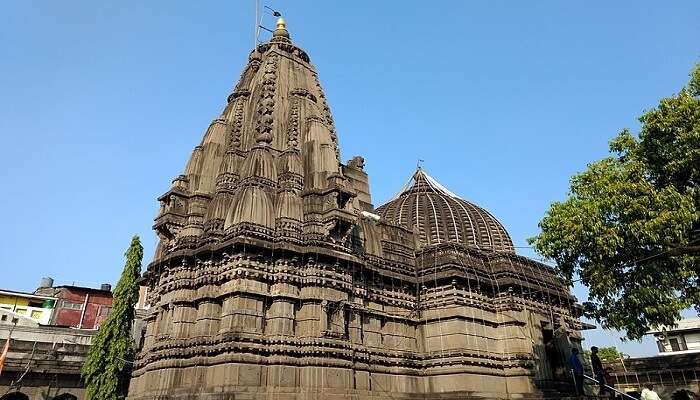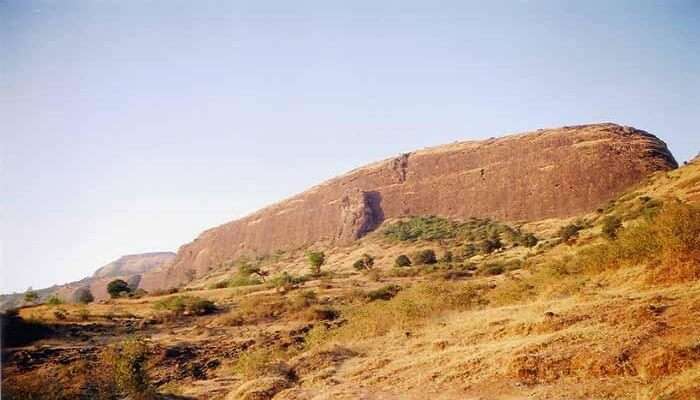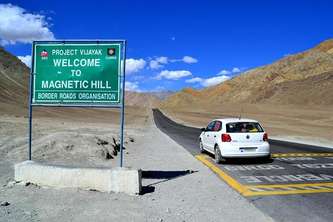Muktidham Temple Is A Spiritual Place To Find Tranquillity In 2025

Temples are considered holy sites where people can commune with their deities. Many people view temples as a symbol of hope and a sacred site. A Hindu temple is often a nidus for religious ceremonies and spiritualism. But even more than that, some temples act as good tourist destinations, among other things. One such name is the Muktidham Temple. This is one of the most well-known temples constructed throughout history. The temple plays a crucial role in highlighting Maharashtra’s rich culture and heritage. Let us know more about this.
Muktidham Temple: The Marble Wonder
Muktidham Temple is a beautiful white marble temple. Several Hindu deities are honoured at the marble temple complex. It is a famous landmark in the Indian city of Nashik, Maharashtra, and a popular tourist destination. The local industrialist who passed away, Mr. J.D. Chauhan-Bytco, generously donated the land for this temple. The site is now privately run through a trust. The temple was constructed in 1971.
1. Inside The Temple

The temple has twelve holy duplicates of the Jyotirlingas, each constructed according to the exact measurements of the original deities and then sent back to their respective pilgrimage sites. Additionally, the Muktidham compound is home to a Krishna temple as well.
Paintings of Krishna and Mahabharata episodes adorn the walls of the Krishna temple. The founder of Muktidham, Jairambhai Chauhan, hired the talents of the famous painter Raghubir Mulgaonkar to create them. Additionally, the walls of this shrine bear the inscribed verses of the Geeta, which number eighteen chapters.
Also Read: Shri Vyankatesh Balaji Mandir
2. Architecture

Today, Muktidham Temple is one of the town’s famous tourist spots due to its alluring architecture. Sculptors from Rajasthan worked using marble quarried in the nearby city of Makrana to create the temple and its parts.
In addition to representations of each of the twelve Jyotirlingas, the Sri Krishna temple houses statues of every critical Hindu deity, including Vishnu, Laxmi Rama, Laxman, Sita, Hanuman, Durga, and Ganesha. The Muktidham Temple sees thousands of Hindu worshippers during the Kumbh Mela. In addition, a spiritual dwelling inside the premises can hold 200 devotees or more.
3. Getting There And Best Time To Visit

Reaching Muktidham temple is relatively easy. The temple lies in the central part of Nashik, a city in Maharashtra. Since it is centrally located, buses and cars can be used to reach the temple. For comfort, you can also hire private taxi cabs that run throughout the day and offer round trips to the temple. Private and government buses also run the entire day.
The temples open at 6:00 AM and close in the evening at around 7:00 PM. They can be visited any day and all year. However, if you wish to see the temple in full swing, you may plan to visit during the iconic Kumbh Mela. The Kumbh Mela is a Hindu pilgrimage that occurs once every 12 years.
Related Post: Nashik Caves
Places To See Around Muktidham Temple
There are many spots to enjoy your day after visiting the Muktidham Temple. Here are a few of those:
1. Shri Kalaram Mandir

Located in the Nashik district of Maharashtra, the Kalaram Temple is an old Hindu shrine honouring the Hindu god Rama. The Panchavati neighbourhood, just 10km from Muktidham Temple in Nashik, is home to this sacred temple. The temple was named after a black sculpture of Rama. Kalaram means “black Rama” in its literal sense: Sita, the goddess, and Lakshmana, the god, are enshrined in the sacred space. The shrine sees thousands of worshippers daily.
Timings: 5 am–10 pm
Distance From Muktidham Temple: 10.1 Km
2. Ramkund

To complete your spiritual journey, visit the notable Ramkund in Nashik, just 10km from Muktidham Temple. Legend has it that Lord Rama took a dip at Ramkund, making it one of the holiest places in the city. The Godavari River runs alongside this spot. The inhabitants of the area believe that a dip in Ramkund’s waters cleanses the spirit and grants a new beginning, one that is more generous and optimistic.
Timings: 8 am–8 pm
Distance From Muktidham Temple: 10.5 Km
Related Post: Kalaran Temple
3. Pandav Leni Caves

Pandavleni is a series of ancient rock-cut sculptures situated at the mouth of the Gomai River about 6 kilometres north of Shahada in Maharashtra. The place is called Tirthankar Leni, Panch Pandav, or Pandav Leni Jain Cave. Saints of the Jain faith dug these caverns two thousand years ago. Carved into a single block of rock, the Pandavleni complex is on the Gomai Riverbed, ten to fifteen meters below. In the east-west direction, two buildings are almost indistinguishable from one another. The intricate carvings in the rock allow the river’s water to flow over them, cascading into the sculpture complex without damaging them.
Timings: 7 am–6 pm
Distance From Muktidham Temple: 14.6 Km
4. Saptashrungi

Saptashrungi, also known as Saptashringi, is a Hindu pilgrimage site in the Indian state of Maharashtra, located near Muktidham Temple. Hindus believe the seven mountain peaks to be the dwelling place of the goddess Saptashrungi Nivasini. (The Tibetan words for “peaks” are “sapta” and “shrung]. Nanduri is a tiny village close to Nashik in the Indian state of Kalwan. The goddess has a long history of worship among the Marathas and other Hindu tribes; some of these communities even consider her their prime deity. Climbing the gad requires taking on the 510 steps of the way. There are a lot of devotees who come here every day. One of the “three and a half Shakti Peethas” in Maharashtra, the temple is well-known to the general public. It is said that one of the limbs of Sati, the wife of Lord Shiva, fell at this temple, one of the 51 Shakti Peethas on the Indian subcontinent.
Timings: 5 am-7 pm
Distance From Muktidham Temple: 9.7 Km
Related Post: Trimbakeshwar Temple
5. Harihar Fort

The Harihar Fort, also known as Harshagad, is a fort in the Nashik district of Maharashtra, India, situated 40 km outside of Nashik City, 48 km outside of Igatpuri, and 40 km outside Ghoti. Built to overlook the trade route through Gonda Ghat, this fort in Nashik district is significant. The unusual rock-cut steps are a major draw for tourists. The Seuna (Yadava) dynasty is credited with constructing the Harihar fort. Along with the forts of Trymbak and other Pune locations, it was ceded to Khan Zamam in 1636. In 1818, Captain Briggs seized this fort. Harshewadi and Nirgudpada are the two settlements that make up the fort’s base. Trymbakeshwar is 13 km away from Harshewadi. Nirgudpada/Kotamvadi is the other fort-base village, which is 40 kilometres from Ghoti, around 48 km from Muktidham temple, and 121 km from Mumbai.
Timings: 7 am–6 pm
Distance From Muktidham Temple: 49.4 Km
6. Anjaneri Fort

Anjaneri is a fort in the Nasik-Trimbakeshwa mountain range. Particularly during the wetter months, the fort and nearby places attract many hikers. Nasik is home to many Jain temples, and Anjaneri is a significant fort in the Trimbakeshwar area. The surrounding natural landscape and hills make this fort a popular tourist destination. Located near the Godavari River, it is 1,300 meters (4,264 feet) above sea level and sits between Nasik and Trimbakeshwar. Fort is close to the Brahmagiri range, vital in Hindu legends as the place where Sage Gautam meditated. Legends have it that Maharishi Gautama and Ahalya’s daughter, Anjana Devi, was the mother of Hanuman, according to certain Puranas. Ahalya cursed her with shameful prematurity to a Vanara child because she did not defend her mother against the adultery accusation.
Timings: 7 am–6 pm
Distance From Muktidham Temple: 33.6 Km
You May Also Like To Read: Picnic Spots In Nashik
Muktidham Temple is a gateway to a spiritual abode. But not just that, it’s an architectural marvel that helps us understand the value of religion in India. So, plan your trip to Nashik and visit this temple to give yourself and your friends or family members some worthy memories.
For our editorial codes of conduct and copyright disclaimer, please click here.
Cover Image Credit : Mahi29 for Wikimedia Commons
Frequently Asked Questions About Muktidham Temple
What is unique about Muktidham Temple?
Muktidham Temple is special as it is made up of marble and appears as a white pilgrimage site to behold. The temple draws many devotees of Lord Krishna on a daily basis.
Who is the supreme deity inside the Muktidham Temple?
Lord Krishna was established as the supreme deity in the temple.
When was the foundation of Muktidham Temple laid?
The temple was originally founded in 1971.
Are there any fees for going inside the temple?
No, there is no entry fee for going inside the temple.
What is the best time of the day to visit the temple?
It is ideal to visit during the evening prayer as the time is best for witnessing the holy spirit of the community.
People Also Read:
Hazara Rama Temple Kuber Bhandari Temple Char Dham Temple

With a passion for exploring and travelling to the roads long forgotten, experience the world through enthralling stories and adventures. Join me as I share my experiences at some of the world’s most popular tourist destinations and quench that pestering curiosity with something exciting!











